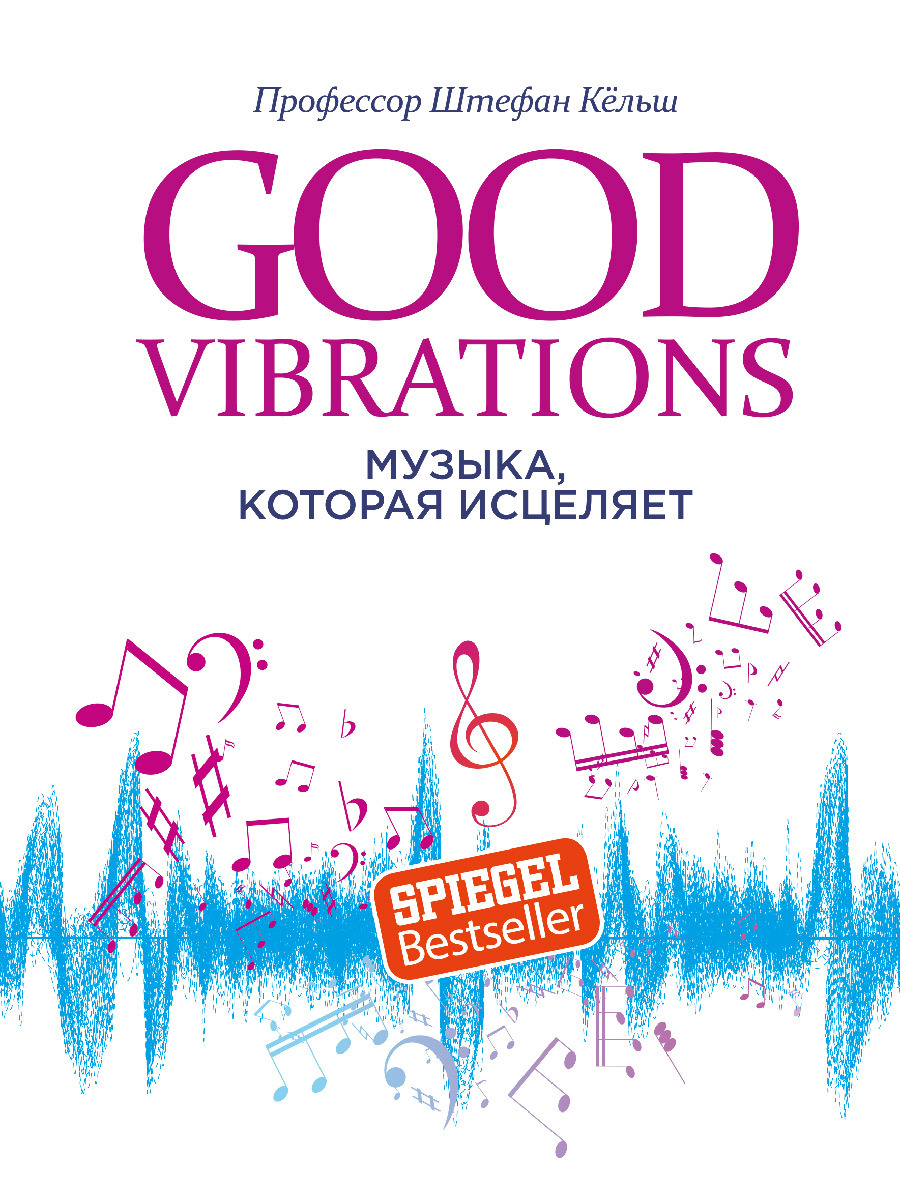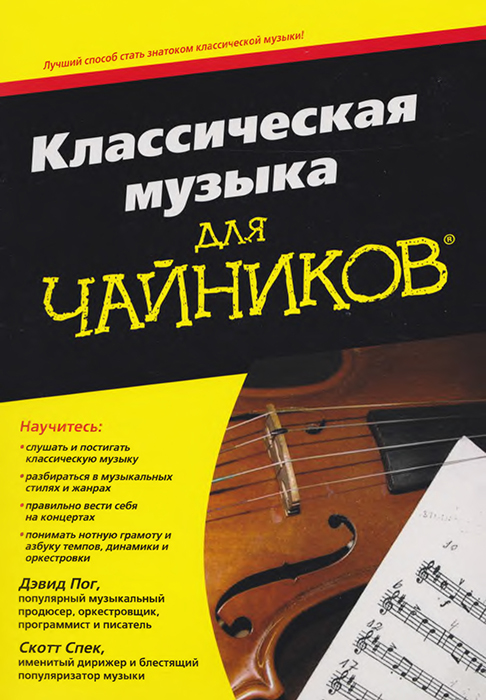Читать книгу - "Good Vibrations. Музыка, которая исцеляет - Штефан Кёльш"
Аннотация к книге "Good Vibrations. Музыка, которая исцеляет - Штефан Кёльш", которую можно читать онлайн бесплатно без регистрации
Эта книга рассказывает о влиянии музыки на физическое и ментальное здоровье человека. Профессор Кёльш утверждает, что музыка лежит в основе человеческой сущности и что музыкальность присуща каждому человеку. Опираясь на новейшие научные исследования, автор рассказывает о влиянии музыки на гормональную, иммунную, вегетативную нервную систему; о том, что происходит в мозге при прослушивании музыки; о влиянии музыки на состояние здоровья и о ее способности лечить болезни и бороться с зависимостями. Вы найдете здесь много практических советов, упражнений и даже списки для прослушивания. Не обязательно читать всю книгу целиком. Вы можете прочесть только нужный вам раздел или знакомиться с частями в любой последовательности. Для всех, кто любит музыку и желает укрепить здоровье.
115
Koelsch, S., Offermanns, K., & Franzke, P. (2010): Music in the treatment of affective disorders: an exploratory investigation of a new method for music-therapeutic research, Music Perception: An Interdisciplinary Journal, 27(4), S. 307–316.
116
Kiecolt-Glaser, J. K., McGuire, L., Robles, T. F., & Glaser, R. (2002): Emotions, morbidity, and mortality: new perspectives from psychoneuroimmunology, Annual Review of Psychology, 53 (1), S. 83–107.
117
Шуточный свод правил, состоящий из 11-ти прописных истин и житейских мудростей. — Прим. пер.
118
Koelsch, S., Jacobs, A. M., Menninghaus, W., Liebal, K., Klann-Delius, G., von Scheve, C., & Gebauer, G. (2015): The quartet theory of human emotions: an integrative and neurofunctional model, Physics of Life Reviews, 13, S. 1–27; Koelsch, S., Jacobs, A. M., Menninghaus, W., Liebal, K., Klann-Delius, G., von Schewe, C., & Gebauer, G. (2013): Ein neurofunktionales Modell von Emotionen. Enzyklopädie der Psychologie/Themenbereich C: Theorie und Forschung, Serie II: Kognition, Bd. V: Affektive und Kognitive Neurowissenschaft, S. 307–342.
119
Todd, N. P., Paillard, A. C., Kluk, K., Whittle, E., & Colebatch, J. G. (2014): Vestibular receptors contribute to cortical auditory evoked potentials, Hearing Research, 309, S. 63–74.
120
Clark, I. N., Baker, F. A., & Taylor, N. F. (2016): The modulating effects of music listening on health-related exercise and physical activity in adults: a systematic review and narrative synthesis, Nordic Journal of Music Therapy, 25 (1), S. 76–104.
121
Fritz, T. H., Hardikar, S., Demoucron, M., Niessen, M., Demey, M., Giot, O., ... & Leman, M. (2013): Musical agency reduces perceived exertion during strenuous physical performance, Proceedings of the National Academy of Sciences, 110 (44), S. 17784–17789; Fritz, T. H., Bowling, D. L., Contier, O., Grant, J., Schneider, L., Lederer, A., ... & Villringer, A. (2018): Musical agency during physical exercise decreases pain, Frontiers in Psychology, 8, S. 2312.
122
Pelletier, C. L. (2004): The effect of music on decreasing arousal due to stress: A meta-analysis, Journal of Music Therapy, 41 (3), S. 192–214.
123
Grewe, O., Kopiez, R., & Altenmüller, E. (2009): The chill parameter: Goose bumps and shivers as promising measures in emotion research, Music Perception: An Interdisciplinary Journal, 27 (1), S. 61–74.
124
Panksepp, J. (1995): The emotional sources of chills induced by music, Music perception: An Interdisciplinary Journal, 13 (2), S. 171–207. См. также предыдущее примечание.
125
Mas-Herrero, E., Zatorre, R. J., Rodriguez-Fornells, A., & Marco-Pallarés, J. (2014): Dissociation between musical and monetary reward responses in specific musical anhedonia, Current Biology, 24 (6), S. 699–704.
126
Blood, A. J., & Zatorre, R. J. (2001): Intensely pleasurable responses to music correlate with activity in brain regions implicated in reward and emotion, Proceedings of the National Academy of Sciences, 98 (20), S. 11818–11823.
127
Di Chiara, G., Bassareo, V., Fenu, S., De Luca, M. A., Spina, L., Cadoni, C., ... & Lecca, D. (2004): Dopamine and drug addiction: the nucleus accumbens shell connection, Neuropharmacology, 47, S. 227–241; Holstege, G., Georgiadis, J. R., Paans, A. M., Meiners, L. C., van der Graaf, F. H., & Reinders, A. S. (2003): Brain activation during human male ejaculation, Journal of Neuroscience, 23 (27), S. 9185–9193.
128
Salimpoor, V. N., Benovoy, M., Larcher, K., Dagher, A., & Zatorre, R. J. (2011): Anatomically distinct dopamine release during anticipation and experience of peak emotion to music, Nature Neuroscience, 14 (2), S. 257.
129
Seidler, R. D., Bernard, J. A., Burutolu, T. B., Fling, B. W., Gordon, M. T., Gwin, J. T., ... & Lipps, D. B. (2010): Motor control and aging: links to age-related brain structural, functional, and biochemical effects, Neuroscience & Biobehavioral Reviews, 34 (5), S. 721–733.
130
Koelsch, S. (2014): Brain correlates of music-evoked emotions, Nature Reviews Neuroscience, 15 (3), S. 170.
131
Sescousse, G., Caldú, X., Segura, B., & Dreher, J. C. (2013): Processing of primary and secondary rewards: a quantitative metaanalysis and review of human functional neuroimaging studies, Neuroscience & Biobehavioral Reviews, 37 (4), S. 681–696.
132
Spintge, R. (2015): Musikmedizinische Interventionen in der klinischen Medizin bei Schmerz, Angst und Stress, in: Bernatzky, G., Kreutz, G. (Hg.): Musik und Medizin, Springer, S. 71–83.
133
Cepeda, M. S., Carr, D. B., Lau, J., & Alvarez, H. (2006): Music for pain relief, Cochrane Database of Systematic Reviews, (2), S. 1–45.
134
Koelsch, S., Fuermetz, J., Sack, U., Bauer, K., Hohenadel, M., Wiegel, M., ... & Heinke, W. (2011): Effects of music listening on cortisol levels and propofol consumption during spinal anesthesia, Frontiers in Psychology, 2, S. 58.
135
Klassen, J. A., Liang, Y., Tjosvold, L., Klassen, T. P., & Hartling, L. (2008): Music for pain and anxiety in children undergoing medical procedures: a systematic review of randomized controlled trials, Ambulatory Pediatrics, 8 (2), S. 117–128.
136
Cavaco, S., Feinstein, J. S., van Twillert, H., & Tranel, D. (2012): Musical memory in a patient with severe anterograde amnesia, Journal of Clinical and Experimental Neuropsychology, 34 (10), S. 1089–1100.
137
Galea, L. A., Leuner, B., & Slattery, D. A. (2014): Hippocampal plasticity during the peripartum period: influence of sex steroids, stress and ageing, Journal of Neuroendocrinology, 26 (10), S. 641–648.
138
Strange, B. A., Witter, M. P., Lein, E. S., & Moser, E. I. (2014): Functional organization of the hippocampal longitudinal axis, Nature Reviews Neuroscience, 15 (10), S. 655.
139
Heinrichs, M., & Domes, G. (2008): Neuropeptides and social behaviour: effects of oxytocin and vasopressin in humans, Progress in Brain Research, 170, S. 337–350.
140
Leuner, B., Glasper, E. R., & Gould, E. (2010): Parenting and plasticity, Trends in Neurosciences, 33 (10), S. 465–473.
141
Lathe, R. (2001): Hormones and the hippocampus, Journal of Endocrinology, 169 (2), S. 205–231.
Прочитали книгу? Предлагаем вам поделится своим впечатлением! Ваш отзыв будет полезен читателям, которые еще только собираются познакомиться с произведением.
Оставить комментарий
-
 Вера Попова27 октябрь 01:40
Любовь у всех своя-разная,но всегда это слово ассоциируется с радостью,нежностью и счастьем!!! Всем добра!Автору СПАСИБО за добрую историю!
Любовь приходит в сентябре - Ника Крылатая
Вера Попова27 октябрь 01:40
Любовь у всех своя-разная,но всегда это слово ассоциируется с радостью,нежностью и счастьем!!! Всем добра!Автору СПАСИБО за добрую историю!
Любовь приходит в сентябре - Ника Крылатая
-
 Вера Попова10 октябрь 15:04
Захватывает,понравилось, позитивно, рекомендую!Спасибо автору за хорошую историю!
Подарочек - Салма Кальк
Вера Попова10 октябрь 15:04
Захватывает,понравилось, позитивно, рекомендую!Спасибо автору за хорошую историю!
Подарочек - Салма Кальк
-
 Лиза04 октябрь 09:48
Роман просто супер давайте продолжение пожалуйста прочитаю обязательно Плакала я только когда Полина искала собаку Димы барса ♥️ Пожалуйста умаляю давайте еще !))
По осколкам твоего сердца - Анна Джейн
Лиза04 октябрь 09:48
Роман просто супер давайте продолжение пожалуйста прочитаю обязательно Плакала я только когда Полина искала собаку Димы барса ♥️ Пожалуйста умаляю давайте еще !))
По осколкам твоего сердца - Анна Джейн
-
 yokoo18 сентябрь 09:09
это прекрасный дарк роман!^^ очень нравится
#НенавистьЛюбовь. Книга вторая - Анна Джейн
yokoo18 сентябрь 09:09
это прекрасный дарк роман!^^ очень нравится
#НенавистьЛюбовь. Книга вторая - Анна Джейн





